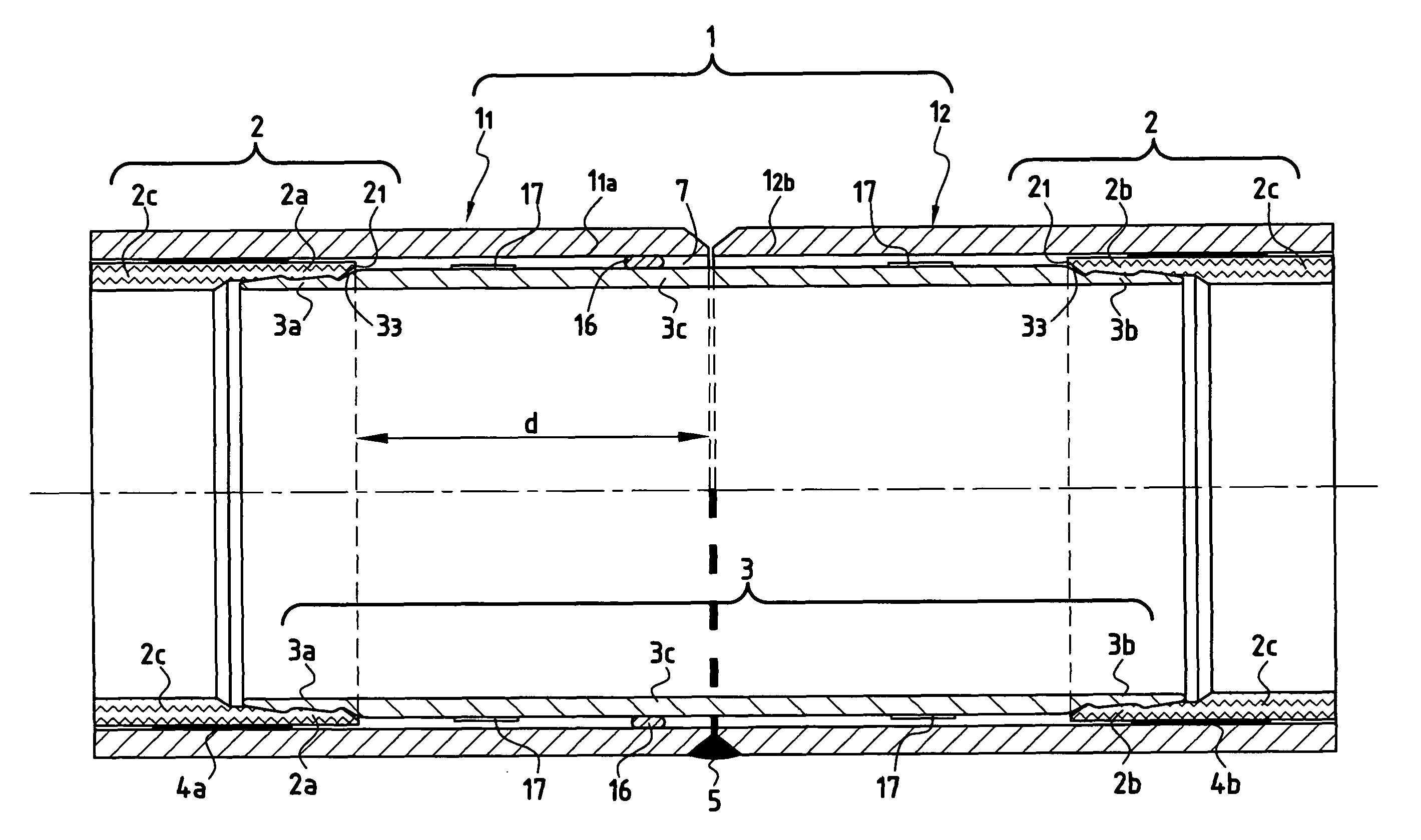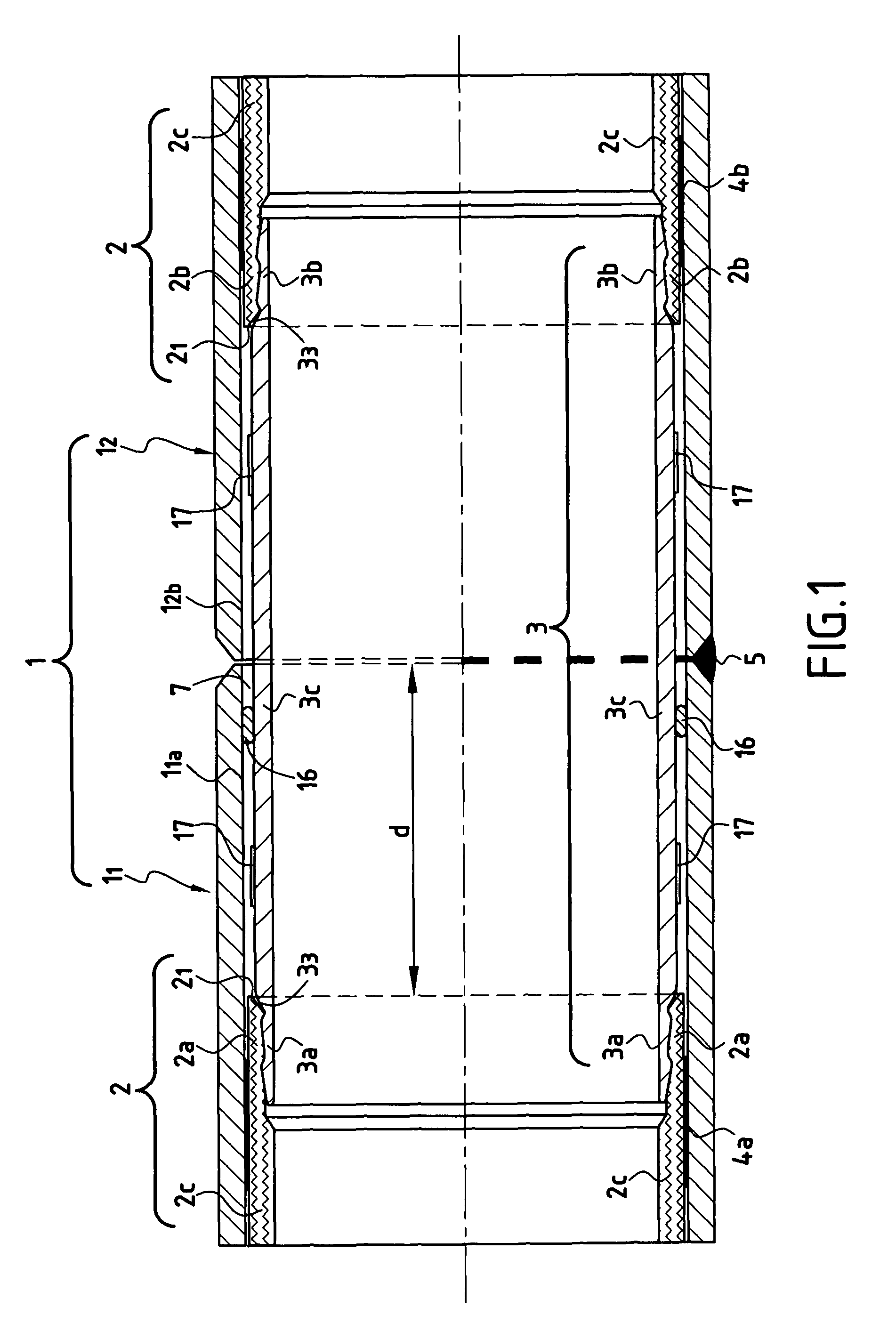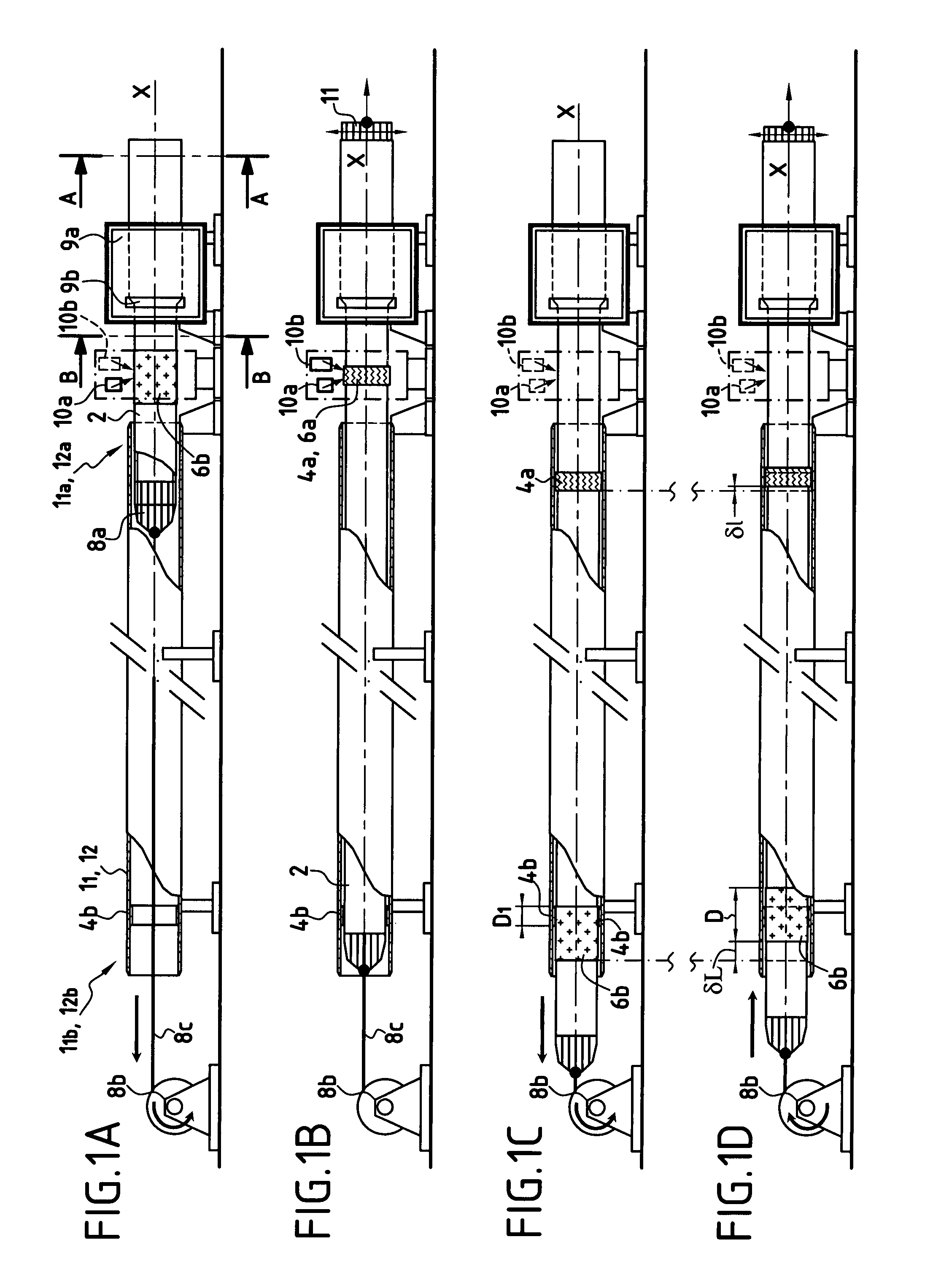Undersea pipe including an internal liner
a technology of internal liner and underwater pipe, which is applied in the direction of mechanical equipment, manufacturing tools, and so on, can solve the problems of high cost, difficult control of process, and considerable complexity of work, and achieve the effect of less expensive implementation
- Summary
- Abstract
- Description
- Claims
- Application Information
AI Technical Summary
Benefits of technology
Problems solved by technology
Method used
Image
Examples
Embodiment Construction
[0066]FIG. 1 shows a pipe of the invention comprising at least two pipe elements 11, 12 with internal liners that are assembled end to end, in which the ends of the two pipe elements are welded to each other at 5, and in which each pipe element comprises:[0067]an inner liner of thermoplastic material 2 presenting at each end a terminal portion 2a, 2b of thickness that is reduced relative to the thickness of the main portion 2c of said liner, defining a surface of revolution of inside diameter that is greater than that of the main portion 2c of said liner and terminating at a certain distance d from the end of said pipe element, having an axis XX′ that coincides substantially with the axis of the pipe elements 11, 12. The outside surface of each said terminal portion 2a, 2b of the inner liner is locked by adhesive bonding 4a, 4b between the end of the liner at or close to said terminal portion 2a, 2b of reduced thickness of the liner and the corresponding inside surface of the steel ...
PUM
| Property | Measurement | Unit |
|---|---|---|
| length | aaaaa | aaaaa |
| length | aaaaa | aaaaa |
| lengths | aaaaa | aaaaa |
Abstract
Description
Claims
Application Information
 Login to View More
Login to View More - R&D
- Intellectual Property
- Life Sciences
- Materials
- Tech Scout
- Unparalleled Data Quality
- Higher Quality Content
- 60% Fewer Hallucinations
Browse by: Latest US Patents, China's latest patents, Technical Efficacy Thesaurus, Application Domain, Technology Topic, Popular Technical Reports.
© 2025 PatSnap. All rights reserved.Legal|Privacy policy|Modern Slavery Act Transparency Statement|Sitemap|About US| Contact US: help@patsnap.com



